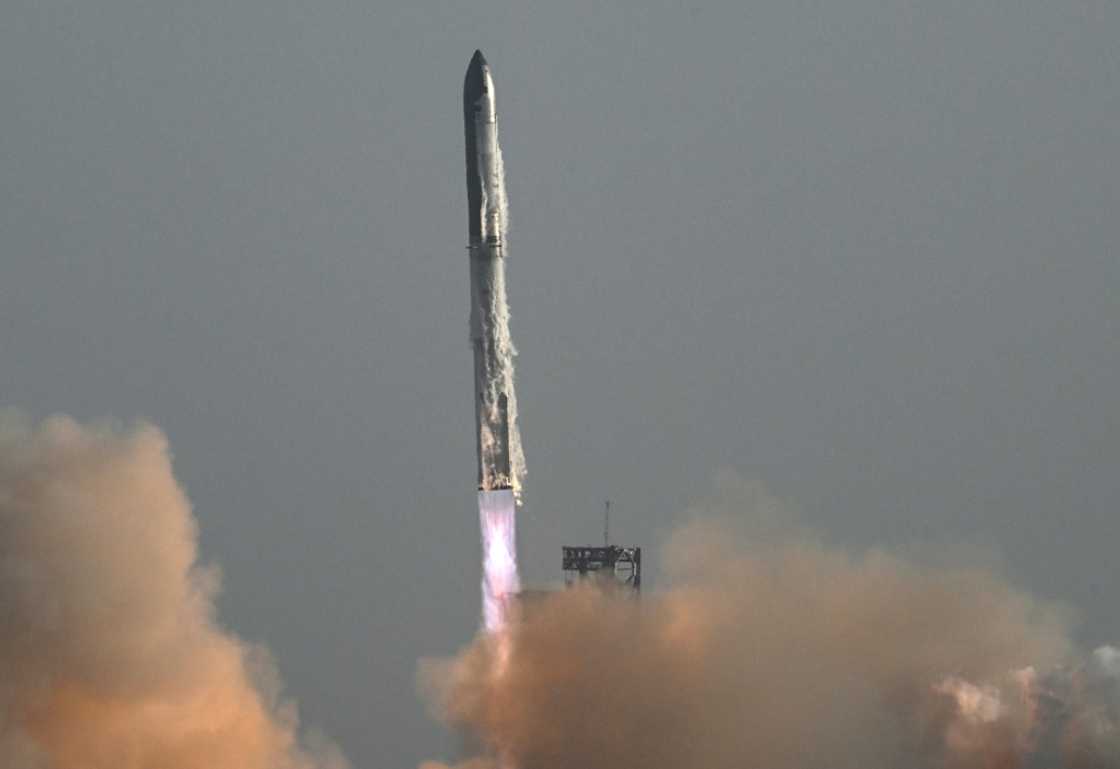SpaceX set for next Starship launch after fiery failures

Source: AFP
SpaceX is set Tuesday for the next test flight of its Starship megarocket -- the linchpin of founder Elon Musk's Mars ambitions -- after the vessel's last two outings ended in fiery explosions.
A launch window opens at 6:30 pm (2330 GMT) from the company's Starbase facility near a southern Texas village that recently voted to become a city, also called Starbase.
Standing 403 feet (123 meters) tall, Starship is the largest and most powerful launch vehicle ever built, and it carries Musk's hopes of making humanity a multi-planetary species.
NASA is also counting on a variant of Starship to serve as the crew lander for Artemis 3, the mission to return Americans to the Moon.
But the last two tests ended with the upper stages erupting into fiery cascades that sent debris raining down over Caribbean islands and disrupting flights -- piling more pressure onto SpaceX to get it right this time.
Dozens of spectators awaited the launch Tuesday from Isla Blanca Park on South Padre Island, to see if SpaceX will pull off its aims this time.
Australian Piers Dawson, 50, says he's "obsessed" with the launch and made it a destination on his family vacation -- his first trip to the United States with his wife and teenager.
"I'm just expecting a successful launch. Obviously, that's very exciting," Dawson said, adding "I brought my 15-year-old son, took him out of school to bring him here."
The stakes of space
The company is betting that its aggressive testing approach, which helped it become the dominant force in commercial spaceflight, will once again pay off.
Still, it acknowledged in a statement that progress "won't always come in leaps."
According to the Wall Street Journal, SpaceX is shifting personnel and resources to the Starship program in a push to have the vehicle ready for a Mars mission as soon as next year.
On the bright side, SpaceX has now demonstrated three times that it can catch the Super Heavy first stage booster in the giant robotic arms of its launch tower -- a daring feat of engineering that it says is key to making the system rapidly reusable and reducing costs.
It will be reusing a Super Heavy booster for the first time on this ninth flight. In order to stress-test it, the base will not attempt a catch this time, opting instead for a splashdown in the Gulf of Mexico.
Similar to previous missions, the upper stage will attempt to fly halfway around the globe and splash down in the Indian Ocean.
For the first time, SpaceX will also aim to deploy a payload: mock-ups of its Starlink internet satellites, which are expected to burn up in the atmosphere.
In issuing its launch approval, the Federal Aviation Administration said it had nearly doubled the airspace closure zone to 1,600 nautical miles east of the launch site. It is coordinating with authorities in the UK, the British-controlled Turks and Caicos Islands, the Bahamas, Mexico, and Cuba.
The FAA also recently approved an increase in annual launches from five to 25 -- stating the increased frequency would not adversely impact the environment and overruling objections from conservation groups who warned the expansion could endanger sea turtles and shorebirds.
Source: AFP




